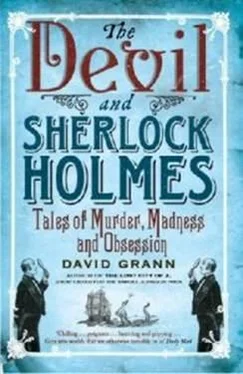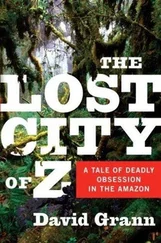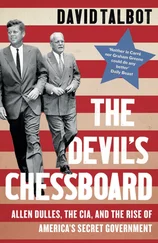I had barely sat down when a lawyer for the prosecution began to scream at Larosiliere, jabbing his hand in the air and demanding that Larosiliere tell the court who he was and why he was there. The attaché, who had been at my side, was on his feet before Larosiliere answered. The crowd filled with murmurs: “Toto Constant! Toto Constant!” People looked around as if Constant might be under the canopy. The lawyer began to bark again at Larosiliere; the attaché now stood by Larosiliere’s side, his arms crossed on his chest.
Most of the alleged victims had already testified that on April 22, 1994, soldiers and FRAPH members had descended on the village of Raboteau, known for its staunch support of Aristide. They described being driven from their homes, forced into open sewers, robbed, and tortured. In past attacks, the villagers had fled to the sea, where their fishing boats were tied up. But when they did so this time, they said, the attackers were waiting for them in boats and opened fire. “I climbed aboard my boat,” one of the villagers, Henri-Claude Elisme, said in a sworn deposition. “I saw Claude Jean… fall under the soldiers’ bullets.” Abdel Saint Louis, a thirty-two-year-old sailor, said, “I fled… into a boat… I then saw Youfou, a FRAPH member, piloting a group of soldiers. They fired in my direction. I called for help. They arrested me, beat me, and forced me to guide the boat. Seeing other people in a boat, the soldiers fired in their direction and hit two girls: Rosiane and Deborah.”
By the end of the assault, according to the prosecution witnesses, dozens of people were wounded and at least six were dead; the prosecution estimated that the actual toll was much higher. Most of the bodies had allegedly been buried in shallow graves along the sea and washed away. “When I went down to the shore, I saw [my brother’s] boat covered in blood,” Celony Seraphin testified. “I only found him on April 28… tied up with Charité Cadet; both had been murdered. I was not authorized to remove the body… I demand justice for my brother.”
The testimony occasionally elicited angry shouts from the spectators, and the judge would ring his bell, trying to quiet the courtyard. That afternoon, Karen Burns, a forensic anthropologist from the United States, was sworn in. A Canadian expert on DNA was scheduled to follow her. It would be the first time that forensic evidence and genetic evidence were introduced in a Haitian court, and the courtyard fell silent. Burns stood in the center of the gathering, surrounded by the skeletal remains of three people, excavated from the edge of the sea in Raboteau in 1995. As she spoke, spectators and jurors craned their necks to look at the bones. Burns held up one and said, “This is the pelvis right here.” She put it down and picked up another bone. “This individual was found with a rope tied around his neck, and this is the rope that was retrieved.” As she held up the rope, there were several gasps.
Larosiliere-who, like his client, maintains that the massacre was fabricated as propaganda to discredit FRAPH and the military regime-remained unimpressed. “I live for testimony like this,” he told me that night, drinking a glass of rum, as we sat with the attaché at the hotel restaurant. “She did a scientific study on a site with no integrity. Everyone and everybody walked around it. Come on. You know I can go to graveyards and pick up skeletons from anybody and put them down.”
Refilling his glass, Larosiliere said that if there had been any organized military involvement at all no evidence would have been left on the beach. “Those bodies would be put on a truck, and they’d be taken out on the Rue Nationale-”
“You got it,” the attaché agreed.
“-or the highway-”
“At night,” the attaché added.
“-and dumped into-”
“The Source Puante,” the attaché said.
“Sulfur ditches,” Larosiliere explained. “The best place, because the sulfur eats the body.”
As he spoke, several international human-rights observers sat down next to us, and soon one of them began to argue with Larosiliere about Constant. Larosiliere said, “If for one instant, sir, I believed that Haiti could sustain a true trial for my client, I’d be the first one to throw him on the plane.”
Later, Brian Concannon, an American human-rights lawyer who had spent most of the previous five years in Haiti spearheading the trial, told me that the trial was extraordinarily fair by any standard. Indeed, he said, it had become a kind of prototype for the judicial system in Haiti. Perhaps most important, despite Constant’s fears that he would be killed, not a single defendant so far had been harmed in prison or in a courtroom. “The defendants were given the benefit of all their rights under Haitian law and under international treaties to which Haiti is a party,” Concannon said. “They were allowed to present witnesses, alibis, and exculpatory evidence.”
As for Constant, Concannon said, the case was based on the same legal precedent used to prosecute Nazi leaders after the Second World War and, more recently, war criminals in Yugoslavia and Rwanda. “Constant started an organization that was specifically designed to [carry out]-and in fact carried out-massive violations of human rights,” he said. “He was in charge of a criminal organization and is responsible for the crimes of that organization.”
On the second day of our visit, Larosiliere decided to stage a protest.
In the middle of the proceedings, he rose from his chair and stood stiffly in the courtroom. The trial came to a halt, and everyone stared at him. Then he marched out the door, the attaché a few feet behind him. There was an angry chorus of murmurs. A prosecution lawyer denounced the move as merely a ruse, a sign that Constant’s lawyer had intended from the outset not to use the tribunal for justice but only to discredit it. (“My understanding of an adequate murder defense is that you spend more than a few hours at the trial,” Concannon told me. “We’ve worked on this case full time for four and a half years.”)
After Larosiliere left, I sat for a while and stared at the dozens of alleged victims sitting on the back benches. Many of them had bought suits for the trial. The young women, some of whom had been shot, wore white dresses that somehow stayed pristine in the dusty heat; they sat with their backs perfectly straight. On several occasions, these people had walked miles to the capital to pressure their government for justice. They had written songs about what had happened. And they sat there now, as rain began to fall, and as a clerk collected the bones strewn on the table, and as rumors filled the country that another coup attempt had been thwarted in the capital.
As I finally rose to go, a young man who had seen me arrive with Constant’s lawyer stopped me. Before I could say anything, he spat at my shoe and walked away.
“They tried to get me to come out to beat me up,” Constant told me shortly after I returned. He was eating a piece of chocolate cake in a Queens diner. Tensions in the community had intensified since the beginning of the trial. Larosiliere had instructed him to leave the house during such demonstrations, to avoid confrontations. But Constant always remained nearby. “I have to protect my mother and aunt in case one of them go crazy,” he told me.
Ricot Dupuy, of Radio Soleil d’Haiti, told me candidly, “There are Haitian groups who have toyed with the idea of taking the law into their own hands and killing him.”
Constant claims that he has a small coterie of supporters who keep an eye out for him. “I can tell you, when they come in front of my place, fifty per cent of the people out there are my people,” he said. “They pass by in case there is any trouble.”
Читать дальше











